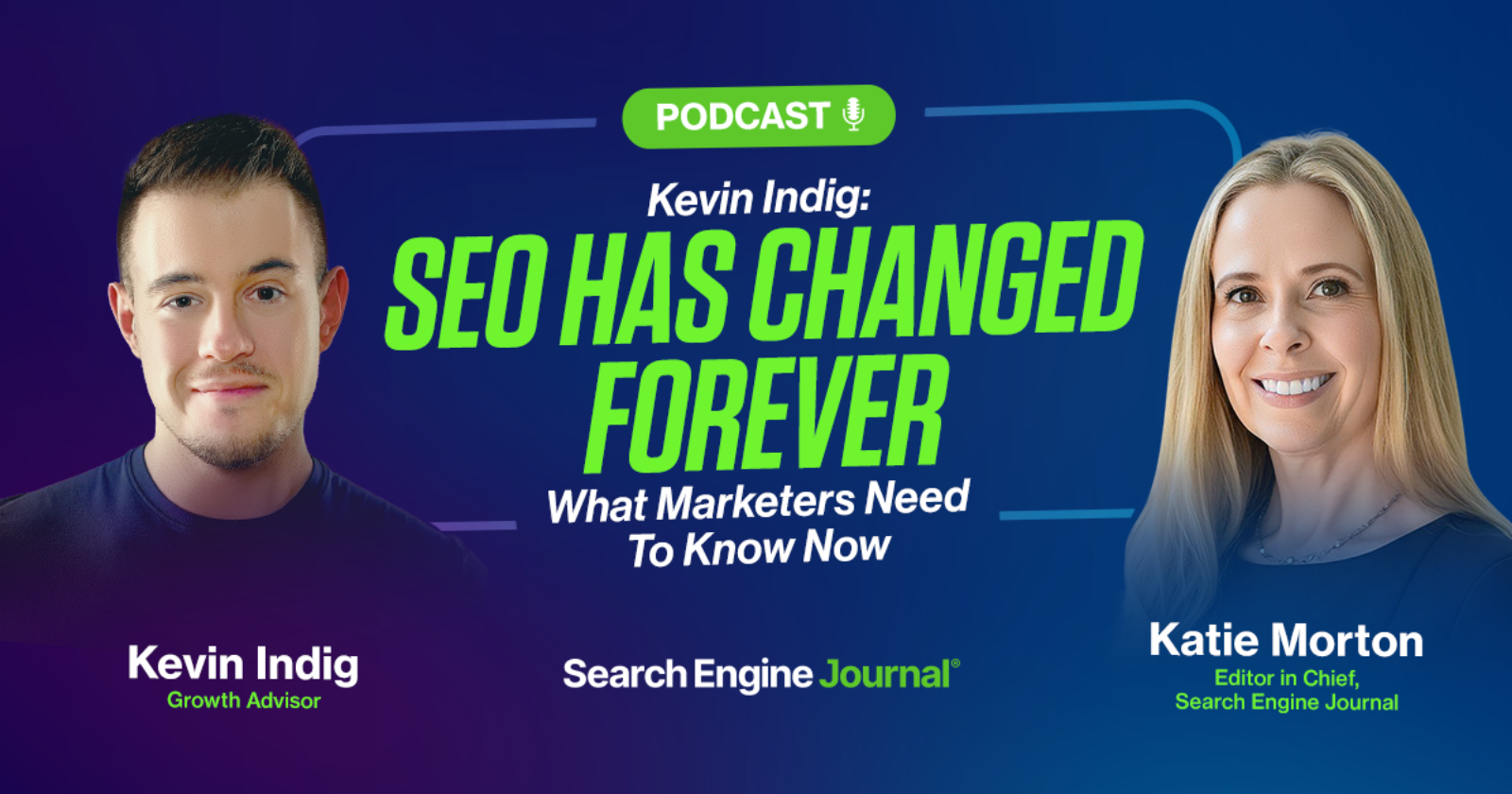Product messaging works when it creates recognition — when the reader thinks, “this is for me.” That moment sparks belief and begins to shape how they see your product in the context of their world.
This is the desired outcome of effective marketing. The brain processes a familiar scenario faster than an abstract one. When a message mirrors the audience’s situation, belief takes less effort and occurs with less mental friction.
Generic messaging creates distance
Vague messaging forces the audience to work. The brain scans for relevance fast, and anything complicated to interpret gets filtered out. One-size-fits-all phrasing only increases that friction.
When messaging feels hard to process, belief stalls. That friction gets subconsciously tied to lower trust. Specificity removes that strain by lowering the cognitive lift required to understand your message. In a competitive space, where every second of research matters, you’ll have to bypass writing for approval and instead write only for the audience.
A message only works when it matches the buyer’s frame — their priorities, concerns and perceptions. If it feels built for someone else, it might as well not exist.
Dig deeper: If your value prop sounds like everyone else’s, you’ve already lost
Controlled surfaces deserve granular messaging
You have complete control over:
- Ads.
- Landing pages.
- Outbound emails.
- Downloadable assets.
Use that control to your strategic advantage. These are the places where segmented messaging should be unapologetically specific and tailored directly to the target audience.
Each asset should mirror the recipient’s world. Speak in scenarios with real context, not statements. Reflect on a familiar pain, task or priority and show you fully understand their status quo. The goal is to eliminate the translation work in the reader’s mind. The faster they connect the dots, the faster belief forms.
Think of the entire chain: targeted ad, message-matched landing page, scenario-driven download, follow-up email that speaks the same language.
When done right, the message moves sequentially and compounds belief at every touchpoint. That is where you have to expand your messaging guidelines to respect the audiences you wish to attract.
Broad surfaces require strategic anchoring
The homepage and core website pages need to clarify the “what” of your product and answer the question of “who are you?” This is your anchor. From there, provide a path for people to go deeper in a way that reflects their context rather than your own.
Most homepage copy tries to say everything and ends up meaning nothing. It’s packed with once-innovative buzzwords that, through repetition, have turned into noise. Less is more in this situation. Be clear and concise first, and then guide users to relevance. That can take the form of:
- Industry-specific callouts.
- Job-role navigation cues.
- Use-case-driven sections that help visitors self-select.
Broader surfaces like your home page, LinkedIn profile and others require thoughtful architecture. When people see themselves, they move forward. When they don’t, they leave.
Know when to break and when to hold
The decision to segment your message should come from the audience’s reality, not from internal assumptions or arbitrary personalization goals. Segmented messaging brings clarity, but it also brings organizational overhead. Not every surface needs to be broken apart, and not every campaign needs a unique narrative.
You change your messaging when:
- The segment has a distinct set of pains, language or decision-making context.
- You control the touchpoint (ads, outbound, landing pages).
- The audience expects specificity (high-consideration B2B, regulated industries, technical roles).
- The buying process depends heavily on use case comprehension.
You hold the message when:
- The audience shares similar goals or challenges across segments.
- You’re early in go-to-market and still validating fit.
- You lack the resources to do it well without diluting the perceived value.
Effective segmentation begins with recognizing when the context calls for it. Avoid fragmenting your messaging until you have a plan that supports clarity, cohesion and execution across the organization.
Failing to change your messaging where needed leads to vague value props, poor sales handoffs and weak campaign performance. But changing it too early — or without alignment — creates internal confusion and slows execution.
The balance lies in deciding where to segment meaningfully and how to maintain coherence as you do. Every detail matters.
Dig deeper: 5 tips for balancing ‘push’ and ‘pull’ in content marketing
Sales messaging fails without context
ABM campaigns, outbound cadences and things like SDR talk tracks must speak the language of the segment. Remember, familiarity creates fluency. Every cold email is a test of belief. If the message fails to resonate instantly, the moment is gone.
Sales messaging must authentically create recognition. If it doesn’t, the result isn’t only internal inconsistency. The reality means lost deals, confused teams and brand erosion that compounds with every touchpoint.
You need to overdeliver with context that:
- Mirrors their language.
- References their world.
- Embeds your product in their story.
That means mapping pain to product in a way that feels obvious to foster comprehension. If a prospect has to ask, “How does this apply to me?” the message fails, and the value disappears.
This only works when marketing and sales are working in sync.
- Marketing builds tailored decks, one-pagers, objection-handling sheets and landing pages that authentically reflect the buyer’s world.
- Sales knows where to find these assets, when to use them and how to extend the narrative through their outreach.
- Both teams use the same central message structure but adapt the emphasis based on who they’re speaking to and where that person is in the cycle.
Sales shouldn’t improvise segment-specific stories from scratch, and marketing shouldn’t ship assets that read like internal brochures, applicable to anyone and everyone.
Each asset, whether a case study, cold email, leave-behind or explainer video, should aim to earn recognition from a specific portion of your total addressable market (TAM). That only happens when teams build, test and refine together.
Operational chaos happens when the message isn’t centralized
Breaking messaging across segments requires structure. Start with a central narrative that defines the product and what it helps people accomplish. From there, build modular messaging by segment, industry, role and use case.
Chaos begins when messaging is ad hoc, improvised or misaligned across teams. This manifests as inconsistent emails, mismatched campaign copy, outdated decks and broken expectations between marketing and sales.
To break messaging without breaking your team, build your internal structure around three core elements:
- Your company narrative: One foundational articulation of your product’s purpose and promise written in the shape of a reason.
- Segment-specific variants: Layered messaging that addresses specific industries, roles or use cases down to the most granular details.
- Shared source of truth: A central location where the latest messaging lives and is accessible, aligned and consistently stress-tested across teams to validate what works the best and why.
Document everything. Train on it. Revisit it. Message chaos is rarely due to evil intent. It’s usually due to a lack of clarity, ownership or visible internal distribution.
When messaging lives in a centralized system and follows a modular structure like this, teams move faster and execute cleanly while learning and fine-tuning along the way. Everyone then knows how to speak with the same core conviction while adapting to the context of the moment.
This is how marketing teams can equip those in the organization to react confidently in real time without diluting the perceived value of the brand or product (or both).
Dig deeper: How to align sales and marketing for revenue growth
Great messaging multiplies
Great messaging works when belief multiplies across every surface your audience touches. When each asset feels made for them, trust builds — and trust drives decisions.
The multiplier effect comes from consistency across specificity. When each channel speaks the same language in the proper context, it compounds the message. That’s when campaigns convert faster, sales cycles shrink and brand perception shifts from noise to “I understand this.”
Contrary to popular habits, you won’t scale by sending a more general message to more people in your TAM. Strong messaging and positioning scale by helping the right people say yes faster because every touchpoint becomes a reinforcing mechanism instead of a mental reset you’ll have to recover from.
Remember that when the message misses the mark, it doesn’t land as neutral. More realistically, it risks creating the false perception that your product isn’t relevant.
That quiet disqualification happens fast and often without a second look. Strong segmentation with associated messaging can counter this by removing the ambiguity that turns curiosity into dismissal.
Clarity delivered specifically and purposefully creates cognitive momentum. Proper messaging segmentation is how you meet someone when they’re ready to listen with the exact message only they need to hear.
Contributing authors are invited to create content for MarTech and are chosen for their expertise and contribution to the search community. Our contributors work under the oversight of the editorial staff and contributions are checked for quality and relevance to our readers. MarTech is owned by Semrush. Contributor was not asked to make any direct or indirect mentions of Semrush. The opinions they express are their own.








